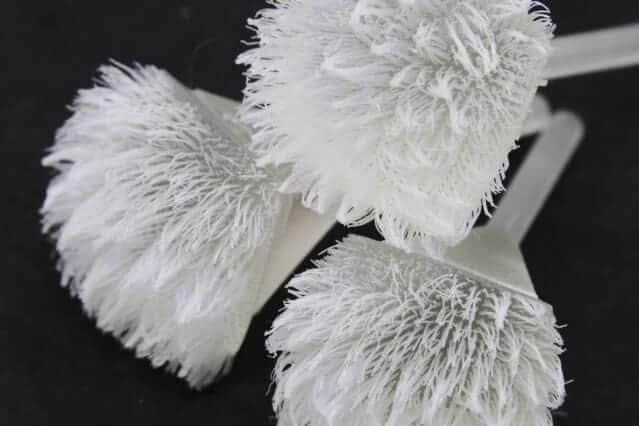In a new study, researchers at the University of California San Diego investigate why hair is incredibly strong and resistant to breaking. The findings could lead to the development of new materials for body armor and help cosmetic manufacturers create better hair care products.
Hair has a strength to weight ratio comparable to steel. It can be stretched up to one and a half times its original length before breaking. “We wanted to understand the mechanism behind this extraordinary property,” said Yang (Daniel) Yu, a nanoengineering Ph.D. student at UC San Diego and the first author of the study.
“Nature creates a variety of interesting materials and architectures in very ingenious ways. We’re interested in understanding the correlation between the structure and the properties of biological materials to develop synthetic materials and designs — based on nature — that have better performance than existing ones,” said Marc Meyers, a professor of mechanical engineering at the UC San Diego Jacobs School of Engineering and the lead author of the study.
In a study published online in Dec. in the journal Materials Science and Engineering C, researchers examined at the nanoscale level how a strand of human hair behaves when it is deformed, or stretched. The team found that hair behaves differently depending on how fast or slow it is stretched. The faster hair is stretched, the stronger it is. “Think of a highly viscous substance like honey,” Meyers explained. “If you deform it fast it becomes stiff, but if you deform it slowly it readily pours.”
Hair consists of two main parts — the cortex, which is made up of parallel fibrils, and the matrix, which has an amorphous (random) structure. The matrix is sensitive to the speed at which hair is deformed, while the cortex is not. The combination of these two components, Yu explained, is what gives hair the ability to withstand high stress and strain.
And as hair is stretched, its structure changes in a particular way. At the nanoscale, the cortex fibrils in hair are each made up of thousands of coiled spiral-shaped chains of molecules called alpha helix chains. As hair is deformed, the alpha helix chains uncoil and become pleated sheet structures known as beta sheets. This structural change allows hair to handle up a large amount deformation without breaking.
This structural transformation is partially reversible. When hair is stretched under a small amount of strain, it can recover its original shape. Stretch it further, the structural transformation becomes irreversible. “This is the first time evidence for this transformation has been discovered,” Yu said.
“Hair is such a common material with many fascinating properties,” said Bin Wang, a UC San Diego PhD alumna and co-author on the paper. Wang is now at the Shenzhen Institutes of Advanced Technology in China continuing research on hair.
The team also conducted stretching tests on hair at different humidity levels and temperatures. At higher humidity levels, hair can withstand up to 70 to 80 percent deformation before breaking. Water essentially “softens” hair — it enters the matrix and breaks the sulfur bonds connecting the filaments inside a strand of hair. Researchers also found that hair starts to undergo permanent damage at 60 degrees Celsius (140 degrees Fahrenheit). Beyond this temperature, hair breaks faster at lower stress and strain.
“Since I was a child I always wondered why hair is so strong. Now I know why,” said Wen Yang, a former postdoctoral researcher in Meyers’ research group and co-author on the paper.
The team is currently conducting further studies on the effects of water on the properties of human hair. Moving forward, the team is investigating the detailed mechanism of how washing hair causes it to return to its original shape.
If our reporting has informed or inspired you, please consider making a donation. Every contribution, no matter the size, empowers us to continue delivering accurate, engaging, and trustworthy science and medical news. Independent journalism requires time, effort, and resources—your support ensures we can keep uncovering the stories that matter most to you.
Join us in making knowledge accessible and impactful. Thank you for standing with us!

